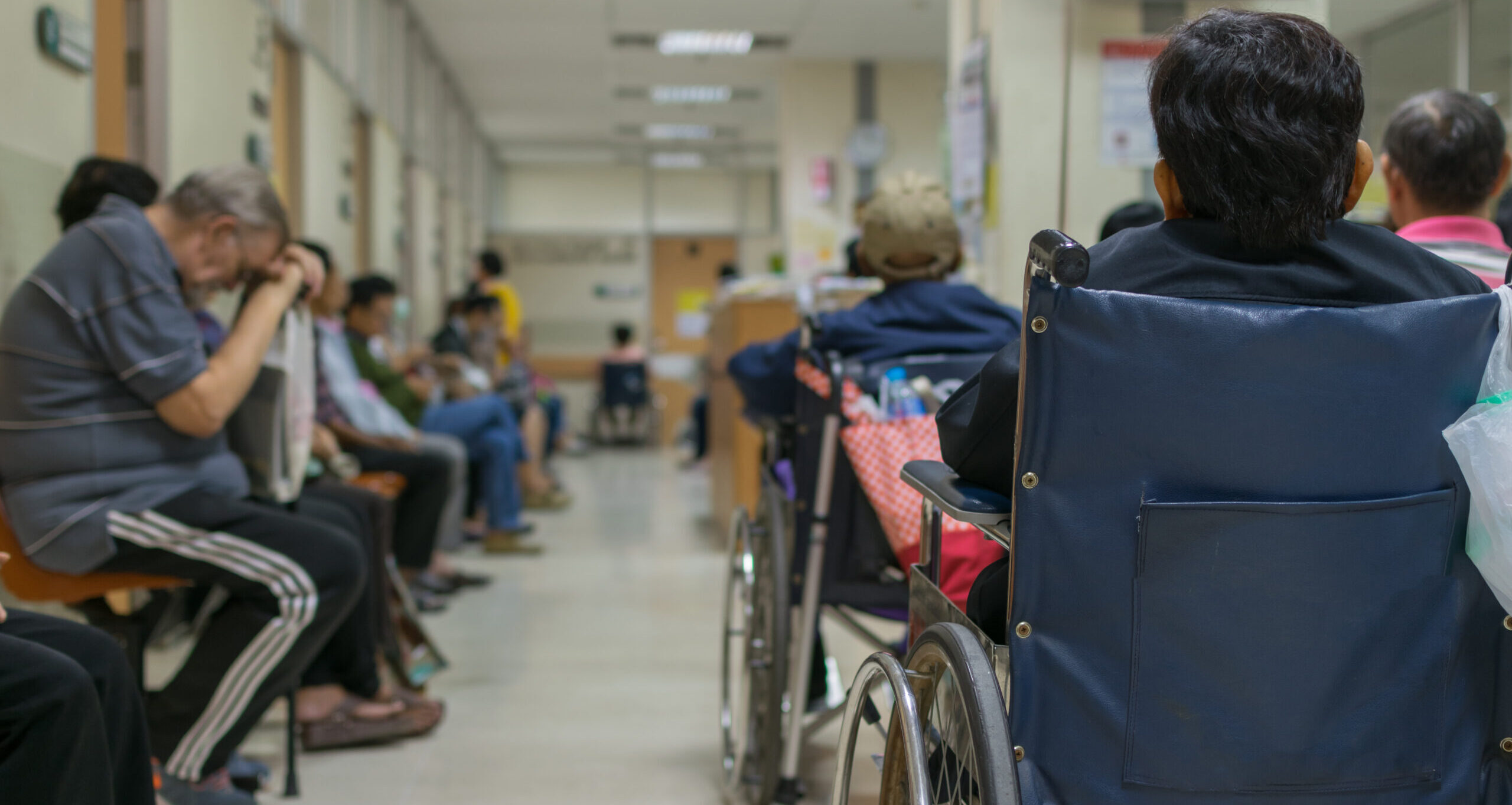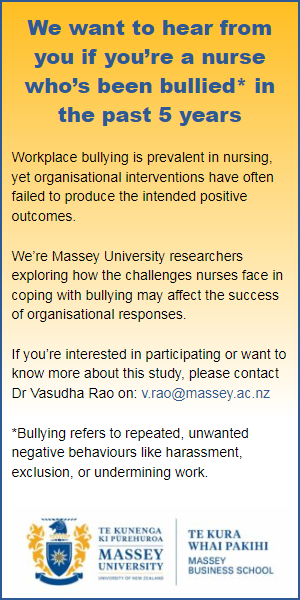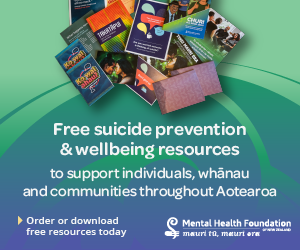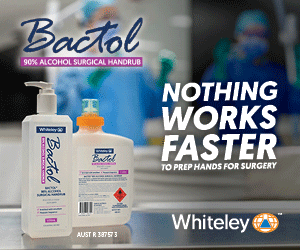
The emergency department (ED) is the “canary in the coal mine”1 of the health system. An overwhelmed ED reflects an overwhelmed system and when it is in crisis, the rest of the system is already there.
The ED is the only part of the health system which is unable to manage its flow — all patients presenting to ED must be seen and cannot be turned away. Primary health care and hospital clinics are based on appointments, and even ambulances are in control of who they go to. While not denying the busyness of these services, ED overcrowding highlights how this department is often the last resort for a patient to go for help.
My plea to those I serve is that we are trying our hardest and will continue to, in a very broken and worn-down system.
How do we explain to people what “busy” means in the ED, when most have only experienced it as patients? How do we communicate the reality of working in a department, day after day, which is crowded, noisy, poorly equipped, where care is rationed and unsafe?
Maybe we should start by explaining what an ED should be like, in an ideal world.
What a safe ED looks like
The Australian College for Emergency Medicine lays out extensive guidelines for designing a safe ED.2 When married with the Health and Disability Commissioner’s rights of the consumer3 – in particular the rights to privacy, to services of an appropriate standard, to communication, to be fully informed and to support — provisions for an ED can be broken into three areas of focus: space, staffing and enablers.
Space:
- Patients need space to be seen, space to lie down and receive care, to wait safely, their privacy upheld.
- Staff need clinical space — for the safe preparation of drugs, to document assessment and cares, to think and plan, to converse with colleagues privately. Decent lighting, ventilation and surfaces are needed, that are ergonomically safe for patients and staff.
Staffing:
This is the team who deliver the care —
- A nurse at the front door who is triaging – quickly seeing all patients, and re-seeing them as necessary.
- Enough nurses and clinical decision-makers (CDMs, ie nurse practitioners and doctors – consultants, registrars and house surgeons) to see the patients within triage time frames.2
- A safe mix of skills and experience to enable the delivery of care and collegial development.
- A support team, without which nothing would happen smoothly – clerical staff, orderlies and security, allied staff, radiographers, lab technicians.

A shift should have time for the delivery of care. All patients should be seen within the triage time frame, and receive regular observations, assessment and a plan of care from a CDM. The treatment should then be delivered by the team within a set time frame and then be re-assessed to see if it was effective. It should be followed by a plan for ongoing care, with prompt admission to hospital or the patient returning home with the correct follow-up organised.
Each shift should have time for safety checks and to re-stock, to make sure the department is ready for emergencies, and after emergencies the space made ready again.
Teams need to be made up of differing levels of skill. Learning on the job is a key part of the system – learning by seeing and doing – and each shift should have senior staff supporting and teaching junior staff. Morning and afternoon tea breaks and lunch are needed, in a staff room where all can sit and relax away from the work.
Each patient should have a nurse and a CDM who can spend time explaining what is happening — time for full consent for treatments, with effective communication between the care-givers and the patient and their whānau/kaitiaki.
Here is how it should be:
A patient presents to ED either by ambulance or at the front door -– a trained triage nurse takes a brief history of the presenting complaint and assigns the patient a triage number.
The patient is then allocated either a cubicle, or returned/taken to the waiting room if they are able to sit and do not need immediate care. The lower the triage number, the more likely a patient needs to be in a cubicle. Initial observations and sometimes other tests such as bloods and an ECG are done while waiting to be seen by a CDM.
Within the time frame, as per the triage number, the patient is seen by a CDM, who makes a provisional list of what could be wrong. They will decide on a number of investigations or treatments to initiate while waiting to make a final diagnosis – such as x-rays, medications, blood and other tests.
While the treatments are given and results awaited, the nurse working with the patient continues with observations, watching for signs of deterioration and monitoring the effect of treatments such as pain relief. Frequency of observations depends on the severity of the illness.
Once all final results are back and initiated treatments reviewed, the CDM makes a final plan of care. They will often discuss a patient’s condition with admitting consultants or consultants in hospital departments, and sometimes (not infrequently) with other specialists in tertiary referring hospitals.
The plan is discussed with the patient and put into place. During this process are frequent conversations with the patient and their kaitiaki – allowing for questions and education about the planned care. If the patient is being admitted, they are transferred to the ward of choice within a set time. If they are awaiting review by another team, ED care continues until the new team, eg surgical, has reviewed the patient and made a specialised plan of care. The new team will often take over the care from the ED CDM.
If the patient is to be discharged, referrals to other areas of the health system — eg fracture clinic, outpatients, home help, ACC, GP or district nursing — can be made by both the CDM and nursing team,.
If the patient is being looked after by a junior staff member, the seniors are supporting and teaching throughout. They are guiding and helping, make sure care is delivered to the expected standard and that their colleague is learning and developing greater knowledge and skills in a safe and supported way.
Behind this individual patient contact, there is a seamless flow of collegial support. The team relieve each other for breaks. If you’re on top of your own workload, you help others. Nurses help each other to mobilise patients, change dressings or put plaster on limbs.
Another layer is senior nursing management, who work continuously to make sure standards are up to what is expected; that nurses are getting their peer reviews, recruitment is effective, practice issues are quickly addressed and managed, equipment and stores are really available, and clinical spaces maintained.
So what is my reality?
My reality is a world away from the ideal. Most shifts are starting with the department full, including patients in spaces which are not set up for patient care (corridors, unstaffed bed spaces). Patients can be waiting up to 10 hours to be seen by a CDM, and nurses do not have time to do observations or re-triage, so patients can be deteriorating without staff knowing.
Those needing to lie down can’t and last week a colleague nursed a patient on the pavement while we looked for a bed; there are no pillows, wheel chairs are sparse.
Pain relief is not given, vomiting cannot be treated. Waiting rooms are crowded and as the patients spread out into the foyer, they are waiting in the cold. Those needing to lie down can’t, and last week a colleague nursed a patient on the pavement while we looked for a bed; there are no pillows, wheelchairs are sparse.
Care is slow to be delivered – patients are waiting long periods for a plaster, for pain relief. We are rationing care. We cannot do the nice stuff which can have an impact on a person’s recovery, and we are too busy to connect with the people we are meant to be caring for.
Breaks are taken in a staff room which is an old office, has no windows and you can hear every bell going off. Breaks are taken on the run. You go to the bathroom so you can call your kids to say goodnight – or you don’t manage to call at all.
Due to overcrowding, we are sharing space with patients. You write notes while they are using the bedpan behind a curtain behind your desk; discuss patients while other patients are sitting around you.
The IT system is poor. We often needing to re-order imaging requests, as they don’t go through. Notes which have been written just disappear, printing comes out blank. You can’t access all the patients’ information and need to go to two or three different web pages to get a full clinical picture of the patient you are seeing.
Due to overcrowding, we are sharing space with patients. You write notes while they are using the bedpan behind a curtain behind your desk; discuss patients while other patients are sitting around you. Or you need to move to another clinical space to make a phone call – even outside in the ambulance bay. Patients are in corridors – lying outside cubicles, watching others through curtains.
Spaces in which staff need to concentrate on writing up medications are noisy – significantly increasing the risk of mistakes. There are not enough computers for all the CDMs to write notes. There are not enough monitors to monitor the patients; monitors are breaking and not able to be fixed as they don’t have current software. Pumps are old and starting to malfunction.
Junior staff, both nursing and medical, are not getting supported – they are not able to find help. Avoiding situations where they may be out of their depth, they are losing the opportunity to learn.
Staff are going home in tears, and are distressed when they get home – families are suffering as a result. They sleep poorly and dread returning to work the next shift. Cares are rushed and those that are not essential are rationed. You feel like you are not doing a good job and you are letting your patients down.
Patients seem angrier – abusing staff, and at times inconsolable and violent. They are distressed because they and their loved ones are not getting the care they need. They are demanding more and are scared of what might be missed and their loved ones being hurt more by the broken system. It is a fear we share.
Staff are going home in tears, and are distressed when they get home – families are suffering as a result. They sleep poorly and dread returning to work the next shift.
We ask DHB management for help and there is none. There are significant gaps on the roster with daily requests for extra help. Staff are working extra shifts, and getting more tired and more likely to make a mistake.
I finish writing this at the end of a night shift which started chaotic, but we have managed to get on top of it. I worked four hours of an afternoon shift, went home for five hours and was back for the night shift. Finishing at 7am, I am back on shift tomorrow at 8am. I will be tired and I will be putting my patients and registration at risk – but this is our constant.
My plea to those I serve is that we are trying our hardest and will continue to, in a very broken and worn-down system. We are sorry it has got to this – we have been saying to those in charge for years that this is coming, and here it is.
Lucy McLaren, RN, NP, MN, is a nurse practitioner working in the Wairarapa emergency department.
References
- Kelen, G. D., Wolfe, R., D’Onofrio, G., Mills, A.M., Diercks, D., Stern, S. A., Wadman, M. C., & Sokolove, P. E. (2021). Emergency Department Crowding: The Canary in the Health Care System. NEJM Catalyst: Innovations in Health Care Delivery, Sept 28.
- Australian College of Emergency Medicine. (2014). Emergency Department Design Guidelines.
- Health and Disability Commissioner. (1996). Code of Health and Disability Services Consumers’ Rights.
- Ministry of Health. (2022). Emergency department triage.





